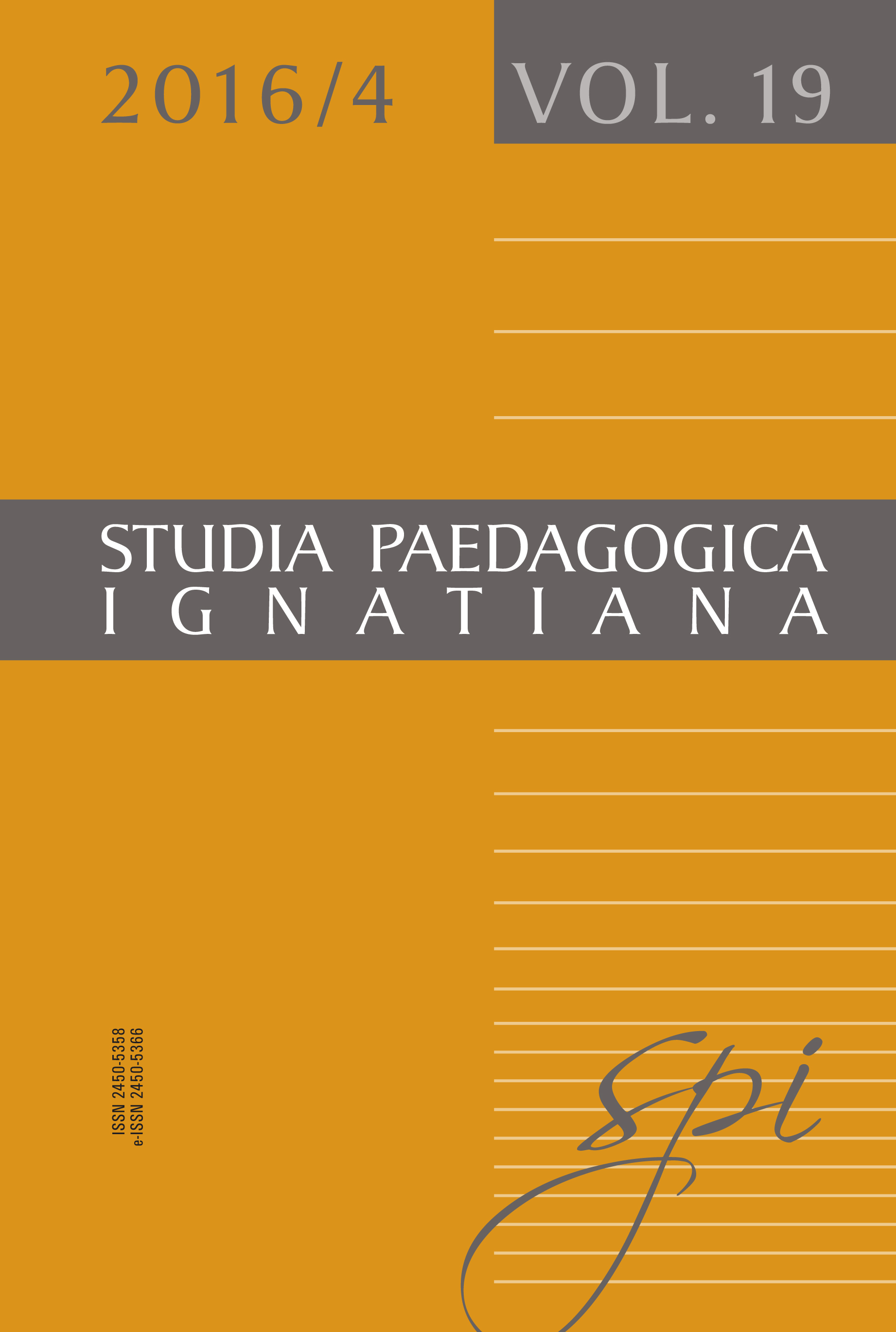Crowded Deserts – Deserted oases
DOI:
https://doi.org/10.12775/SPI.2016.4.004Keywords
meaning of life, helplessness, bereaved, the condition of the modern man, metaphorAbstract
The article will attempt to describe the situation of the young modern man through the symbolism of the desert. In both oral tradition and written tradition (e.g. the Bible), the desert is depicted as a place of disorder that threatens man, and as a seat of evil spirits and malevolent forces. The Author refers to the description of a specific traumatic experience that Israelites had during their journey after they had escaped from Egypt. The Author also refers to the place of the temptations of Christ but, nevertheless, the article also presents another view of the desert, in which it is understood as a place of spiritual revival, a space for human freedom and the place where the need for solitude can be fulfilled. Wandering through the desert, without any signposts, any lasting traces in the sand, or any landmarks is, according to the Author, an accurate metaphor for the condition of the modern man. How many temptations and dangers await us out on the desert? What are the ways out or, perhaps more accurately, what are the means of escape? This text is also a dialogue with E. Fromm’s concept and quasi-concepts referring to magic, and an attempt to determine how many forms of escape from freedom can be specified. The Author will discuss the essence of freedom and its limits, when faced with helplessness and solitude. Are we bound to be forever torn between dependency and unrestrained freedom of the possible life styles? The author argues that individuals who are constantly tempted and allured by the “oases of happiness” become “people with hollow eyes”. This category is discussed by the author from the perspective of the challenges of modern education and the essence of man.
References
Arendt H., Między czasem minionym a przyszłym, transl. M. Godyń, W. Madej, Aletheia, Warszawa 1994.
Bokszański, Tożsamości zbiorowe, Wydawnictwo Naukowe PWN, Warszawa 2015.
Botkin J., Elmandjra M., Malitza M., Uczyć się – bez granic. Jak zewrzeć „lukę ludzką”?, transl. M. Kukliński, PWN, Warszawa 1982.
Buber M., Droga człowieka według nauczania chasydów, transl. G. Zlatkes, Cyklady, Warszawa 2004.
Byrne R., The Secret, trans. J. Kabat, Nowa Proza, Warszawa 2007.
Czarnowski S., Kultura, Spółdzielnia Wydawnicza „Książka”, Warszawa 1948.
Derrida J., Vattimo G. [et al.], Religia, transl. P. Mrówczyński, Wydawnictwo „KR”, Warszawa 1999.
Flawiusz J., Dawne dzieje Izraela, transl. Z. Kubiak, J. Radożycki, Oficyna Rytm, Warszawa 2001.
Fromm E., Ucieczka od wolności, transl. O. and A. Ziemilscy, Czytelnik, Warszawa 1970.
Heidegger M., Bycie i czas, transl. B. Baran, Wydawnictwo Naukowe PWN, Warszawa 1994.
Heschel A.J., Człowiek nie jest sam, transl. K. Wojtkowska, Znak, Kraków 2001.
Krajewski S., 54 komentarze do Tory dla nawet najmniej religijnych spośród nas, Austeria, Kraków 2004.
Kushner L., Miód ze skały, transl. Z. Wiese, Dom Wydawniczy „Rebis”, Poznań 1994.
Kwiatkowska H., “Czas, miejsce, przestrzeń – zaniedbane kategorie pedagogiczne”, in: Pedagogika u progu trzeciego tysiąclecia, ed. A. Nalaskowski, K. Rubacha, Wydawnictwo UMK, Toruń 2001.
Lévinas E., Czas i to, co inne, transl. J. Margański, Wydawnictwo „KR”, Warszawa 1999.
Petrykowski P., “Czy ratować Niniwę – czyli po co nam wiedza”, in: Wdzięczność i zobowiązanie. Myśl Jana Pawła II źródłem inspiracji współczesnego środowiska akademickiego, ed. C. Kustra, Wydawnictwo UMK, Toruń 2009.
Petrykowski P., Edukacja regionalna. Problemy podstawowe i otwarte, Wydawnictwo UMK, Toruń 2003.
Pięcioksiąg Mojżesza, Tora, transl. I. Cylkow, Austeria, Warszawa 2009.
Pismo Święte Starego i Nowego Testamentu. Biblia Tysiąclecia, Pallottinum, Poznań 2002.
Ratzinger J., Jezus z Nazaretu. Od chrztu w Jordanie do przemienienia, transl. W. Szymona, Wydawnictwo M, Kraków 2007.
Skarga B., “Pustynia”, Tygodnik Powszechny. Kontrapunkt 2001, no. 3–4(53–54).
Skarga B., Tożsamość i różnica. Eseje metafizyczne, Znak, Kraków 1997.
Skarga B., Ślad i obecność, Wydawnictwo Naukowe PWN, Warszawa 2002.
Tischner J., Filozofia dramatu. Wprowadzenie, Paryż 1990.
Tuan Y.F., Przestrzeń i miejsce, transl. A. Morawińska, PIW, Warszawa 1987.
Downloads
Published
How to Cite
Issue
Section
License
By submitting an article, the author declares that:
they are the author of the article (hereinafter referred to as the Work) and:
- is entitled to exclusive and unlimited copyright to the Work,
- is entitled to dispose of the copyrights to the Work.
The Author grants the Jesuit University Ignatianum in Cracow a free, non-exclusive, territorially unlimited license to use the Work in the following fields of exploitation:
- publishing the Work in paper, digital or magnetic form;
- multiplying the work by any method, without limiting the number of editions or copies;
- distribution of the work and its copies in any form, including marketing, sales, lending, and lease;
- placing the work in a computer memory;
- distribution of the work in information networks, including the Internet;
- public performance, exhibition, display, reproduction, broadcasting and re-broadcasting, as well as making the Work available to the public in such a manner that everyone could have access to it at a time and place chosen by themselves;
- within the scope of dependent rights to the Work, covering, in particular, the right to make necessary changes to the Work, resulting from editorial and methodical preparation, as well as to make translations of the Work into other languages.
The license right shall be transferred the moment of transfer of the Work to the Jesuit University Ignatianum in Cracow. The Jesuit University Ignatianum in Cracow is entitled to grant sub-licenses to the Work in terms of the right granted. The license shall be limited in time for a period of 15 years from the date it is granted.
Stats
Number of views and downloads: 404
Number of citations: 0



